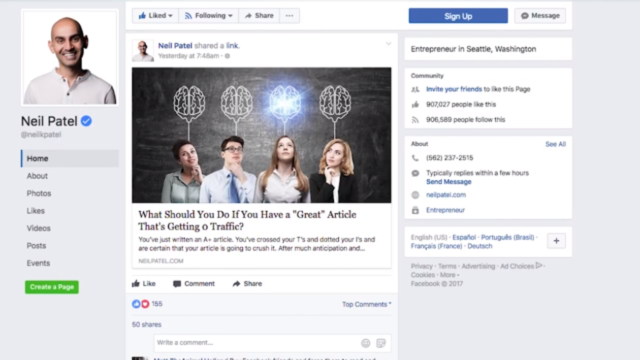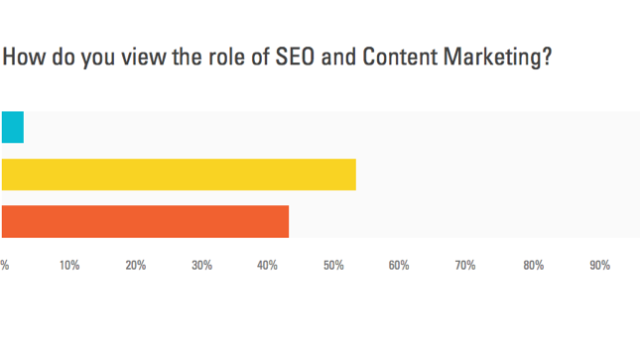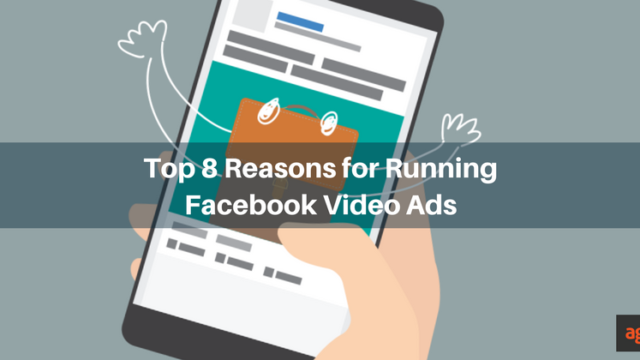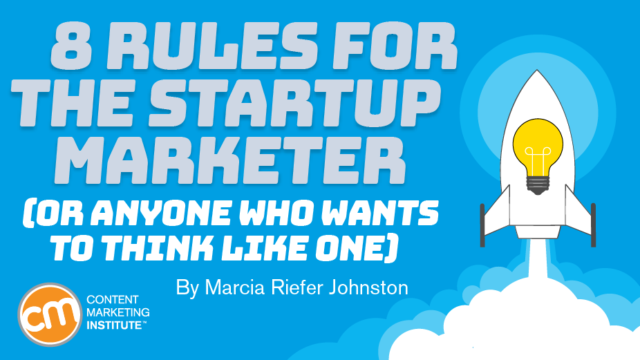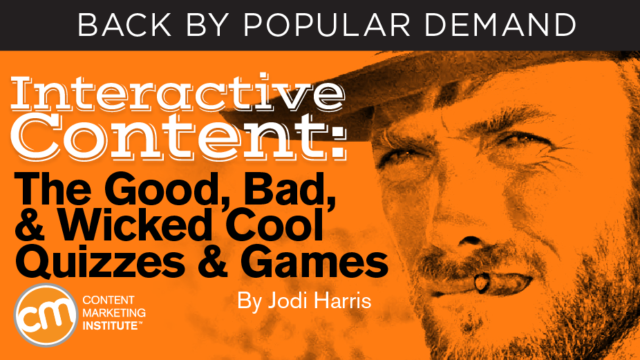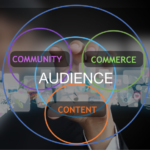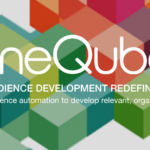Industry News
-
We’ve teamed up with the team at Adobe Spark, an awesome free design tool, to share 10 Instagram Stories templates you can use to quickly create your Instagram Stories content. Instagram Stories: 10 ways your business can use Stories (plus 10 free Adobe Spark templates) There are so many different ways to use Instagram Stories. We’ll take these questions and turn them into short Stories tutorials. You might be interested in sharing: Various ways to use your product Surprising stats and facts about your industry User-generated content You can also try fun and entertaining lists such as “top books for marketers” or “top things we learned in social media this month.” People love a good list! How to design your own Instagram stories in under 10 mins Adobe Spark is one of our favorite free design tools for creating graphics. Select the Instagram story template Adobe Spark has a handy template for Instagram Stories, so you know your post will be perfecly sized. Adobe Spark will generate a design with your caption. To use a plain color for the background, select your preferred color from the side panel and Adobe Spark will remove the suggested image. With Adobe Spark, there are six different ways you can edit your caption. It provides 12 professionally-produced video templates you can use to create Instagram Stories videos.
-
Beauty Entrepreneur Bobbi Brown Explains the ‘Secret Sauce’ to Building a Brand Loved By Everyone
Having a huge following of devoted brand ambassadors -- people who not only rave about your product to their friends, family and colleagues, but also tell complete strangers about it -- is something every entrepreneur wants. But this doesn’t just happen. You, as the founder of a company, need to work at it and create an amazing product. Brown launched her namesake brand Bobbi Brown Cosmetics in the early '90s. She focused on a natural, fresh look when other brands were into bright, extreme looks. It was her “secret sauce.” “My whole philosophy about make up was so much about me,” Brown told us in our recent episode of Tough Love Tuesday, Entrepreneur.com’s Facebook Live series connecting side-hustling entrepreneurs with advice and resources. Estee Lauder bought the brand in 1995, with Brown continuing to be at the helm of the cosmetic line until leaving last year. Now, with lifestyle website JustBobbi in the works, along with a supplement line, Brown is starting from square one again. This time around, it will be a lot less stressful and more fun, she says. To see what she has to say about her entrepreneurial experience -- from hearing no’s from everyone, suffering a huge launch disaster and learning to listen to her inner voice -- along with advice she offers entrepreneurs, check out the video above. -
The Self-Esteem Movement: Why Marketers Want You to Love Yourself (and How They Sometimes Fail)
Think about Lane Bryant’s #ImNoAngel campaign, which ended up earning the company $7 million in incremental sales after months of drought. With a self-esteem-based ad, due to its emotional impact, customers are more likely to perceive its message and the product attached to it as genuine, because it echoes what those customers are already thinking. The Dove "Real Beauty" campaign was launched because a study showed that only 2 percent of women participants considered themselves "beautiful," demonstrating a persistent and present need in the customer base. Lane Bryant's "No Angel" campaign changed the message from "how women can become beautiful" to "these women are already beautiful." An increase in confidence means an increase in sales. Self-esteem and body positive marketing campaigns may have their own moral implications of changing body politics, but that doesn't change the fact that businesses exist to make a profit. There's more: Earlier this month -- October 2017 -- the company posted a three-second video clip on its Facebook page to promote Dove Body Wash. One woman posted, “This is gross. The message for beauty companies: Dove clearly fell out of touch with its customers when it produced this ad. If executed tastefully, such campaigns have proven to be a boon for branding and sales by fulfilling a present need in a customer base. -
The Self-Esteem Movement: Why Marketers Want You to Love Yourself (and How They Sometimes Fail)
Think about Lane Bryant’s #ImNoAngel campaign, which ended up earning the company $7 million in incremental sales after months of drought. With a self-esteem-based ad, due to its emotional impact, customers are more likely to perceive its message and the product attached to it as genuine, because it echoes what those customers are already thinking. The Dove "Real Beauty" campaign was launched because a study showed that only 2 percent of women participants considered themselves "beautiful," demonstrating a persistent and present need in the customer base. Lane Bryant's "No Angel" campaign changed the message from "how women can become beautiful" to "these women are already beautiful." An increase in confidence means an increase in sales. Self-esteem and body positive marketing campaigns may have their own moral implications of changing body politics, but that doesn't change the fact that businesses exist to make a profit. There's more: Earlier this month -- October 2017 -- the company posted a three-second video clip on its Facebook page to promote Dove Body Wash. One woman posted, “This is gross. The message for beauty companies: Dove clearly fell out of touch with its customers when it produced this ad. If executed tastefully, such campaigns have proven to be a boon for branding and sales by fulfilling a present need in a customer base. -
Blending Art with Strategy for Powerhouse Content
Your content might be marvelously entertaining and engaging, but if it’s not placed in a strategic context, you’ve limited its power. Getting smarter about strategy won’t make your work less creative or meaningful. In fact, the opposite is true. Wise strategy makes your message more powerful, which is what we teach in our Certified Content Marketer training program. If you’d like to get all the details on how you can enroll when we reopen the doors for a limited time soon, join the waitlist here. On Monday, our Data Analyst Loryn Thompson kicked off the week with an article about when to use (and when not to use) powerful bits of analytics code called UTM parameters. On Tuesday, Stefanie Flaxman wrote about the value of pairing art with strategy: using your craft to give others a strong voice, then using that voice strategically to reach a specific goal. And on Wednesday, I showed how to employ some of Copyblogger’s favorite strategic power tools — specifically, copywriting techniques — to make your presentations more relevant and effective. Over on Copyblogger FM, I talked about how to make smarter decisions for your website and content — without exhausting yourself with decision fatigue. And on Sites, Jerod Morris unpacked one of the great techniques that can be used to bring more art to your strategy: the persuasive analogy. -
I Spent $400,000 on Facebook Fans. Here’s Why You Should NOT Follow My Lead.
In this video, Entrepreneur Network partner Neil Patel explains how he spent $400,000 on fans for his Facebook page, and why it was a waste. When Patel started using this strategy, he had over 100,000 visitors to his website each month from Facebook. However, when the social network changed its algorithm, making it more difficult to drive traffic from a fan page, his return on investment fell dramatically. Click play to learn more about how you can avoid the same pitfalls. Related: Looking to Get More Traffic to Your Website? Here Are Some Creative Ways to Do It. We provide expertise and opportunities to accelerate brand growth and effectively monetize video and audio content distributed across all digital platforms for the business genre. EN is partnered with hundreds of top YouTube channels in the business vertical. Click here to become a part of this growing video network. Conversation BoldItalic Text size Small Normal Large Numbered listBulleted listQuote Add Photo Formatting Post TermsPrivacy Add Spot.IMAdd Spot.IM to your site -
5 steps to making your content smarter
Despite this rise in understanding, however, a prominent problem remains: many marketers still struggle to get their content consumed by their target audience. Smart content is: Discoverable: Easily found Optimized: From point of creation Profitable: Measurable To improve content performance, brands need to stop producing content for content’s sake and instead produce smart content: content that is better suited to what users want to read, and is prepared for the SERP so those targeted users can find and engage with the material. The data marketers gather from search can provide invaluable information about what target audiences search for and what they want to read. Data provides key insights on consumer intent and the topics marketers need to produce content that serves this audience. Smart content in context Smart content is about taking the financial investment that companies make in their content development and channeling it towards a more effective and data-driven strategy. It is different to the content that brands already produce, because it builds off of brands’ improved awareness of customer intent signals and how site visitors interact with the content that organizations produce. The content will also be optimized from the moment of its creation, and therefore, the content will perform. Understand who Make sure you know exactly who you will target with your content. With SEO and content converged into a single portion of the digital marketing process, all content produced should be optimized right from production so that no content needs to be re-optimized later, empowering it to rank as highly as possible from the first time it is crawled. Following these five steps will help you produce the right amount of content that delivers the right results. -
Top 8 Reasons for Running Facebook Video Ads
But if you are only relying on organic methods for getting your video content seen by your ideal customers, then you are missing out! Movement Rules Your Facebook video ad will auto-play in the newsfeed, allowing you to stand out and catch the attention of your audience more than what you can achieve by creating a static image ad. But with so much noise on Facebook these days, it’s important to make sure that your ads stand out. Watch how this nonprofit organization gets right to the point. But remember, just because you are running a video ad, doesn’t mean you have to choose the video ad objective. Instead, you can choose video as the format within another campaign objective, such as traffic if you are using the video to attract attention but your ultimate objective is to get people to visit your website or conversions if you would like the delivery of your video ad to be optimized for people who are more likely to opt-in or purchase. When you post a video organically, the link to click-through can often be buried below the “read more” hyperlink or non-existent if the viewer clicks through to watch the video full-screem. However, with a video ad that is created within the Ads Manager, you have the opportunity to include a call-to-action button that sits prominently below your video ad when it is auto-playing in the newsfeed, allowing your call-to-action stand out, which assists with people taking your desired action. If you create a good video ad, you will get loads of people engaging with it. Don’t forget to respond to any engagement that occurs with your video ad in a timely manner. -
8 Rules for the Startup Marketer (or Anyone Who Wants to Think Like One)
Whether or not you think of your company as a startup, put on your startup-marketer hat, and consider which pieces of Vishal’s advice might make all the difference for you. “Make it a simple system that you can manage – and then be extraordinary in the content you develop and push out there and the strategies you implement,” Vishal says. While people working in startups often have the extra motivator of having “a chunk of ownership” of the company, anyone in any company has an opportunity to dig deep and bring passion to the job. In Vishal’s case, passion might mean finding creative ways to do his own market research. Aiming at conversion on every page has two advantages: You get more leads. You don’t need to develop a landing page; you already have it. You can connect that page to your ad processes. Your strategy is to develop and distribute content that hits these subgoals as you aim for your target. Streamline your processes One of the biggest advantages startup marketers have is their ability to get things done quickly. What kind of connections do you want to make and how often? -
Interactive Content: The Good, Bad, and Wicked Cool Quizzes and Games
We’re sharing an updated version now because interactive content is a growing opportunity for marketers. (And it seems other marketers may just agree with me, as evidenced by 2017 research from Content Marketing Institute and ion interactive, which found that 46% of content marketers use interactive content.) The value proposition of interactivity Personal vanity aside, the increased potential to attract attention and drive brand engagement that interactivity can offer is a compelling reason for marketers to add quizzes, assessments, customization tools, games, and other participative features to their marketing arsenals. For consumers to customize their interactions with your interactive offerings, they typically need to share a little personal information, thus providing deeper insights on their needs, interests, and preferences that your business may never have gained using more passive content techniques. Engagement Providing key insights and advice that help consumers make more informed decisions always reflects well on a brand’s value proposition. Lead nurturing Done well, interactive content can also offer marketers invaluable information about their user base, which can be instrumental when applied to the lead-nurturing process. The collection was accompanied by a “shoppable” video powered by Cinematique, a platform that enables “touchable” video. Interactive features like diagnostic tools, trackers, and chatbots can be instrumental in helping customers learn more about working with the products they’ve purchased, troubleshooting any issues that may arise, and staying connected so they can share the positive experience they have had with your brand. Take advantage of interactivity helpers: Third-party software can make these features more cost-effective to create and easier for marketers to manage. Consider working with interactive content platform providers: Not only can third-party tools help with the heavy lifting in developing tech-enhanced content, some platforms can be configured to integrate the performance data with your marketing automation systems, CRM tools, or other content management solutions. -
Interactive Content: The Good, Bad, and Wicked Cool Quizzes and Games
We’re sharing an updated version now because interactive content is a growing opportunity for marketers. (And it seems other marketers may just agree with me, as evidenced by 2017 research from Content Marketing Institute and ion interactive, which found that 46% of content marketers use interactive content.) The value proposition of interactivity Personal vanity aside, the increased potential to attract attention and drive brand engagement that interactivity can offer is a compelling reason for marketers to add quizzes, assessments, customization tools, games, and other participative features to their marketing arsenals. For consumers to customize their interactions with your interactive offerings, they typically need to share a little personal information, thus providing deeper insights on their needs, interests, and preferences that your business may never have gained using more passive content techniques. Engagement Providing key insights and advice that help consumers make more informed decisions always reflects well on a brand’s value proposition. Lead nurturing Done well, interactive content can also offer marketers invaluable information about their user base, which can be instrumental when applied to the lead-nurturing process. The collection was accompanied by a “shoppable” video powered by Cinematique, a platform that enables “touchable” video. Interactive features like diagnostic tools, trackers, and chatbots can be instrumental in helping customers learn more about working with the products they’ve purchased, troubleshooting any issues that may arise, and staying connected so they can share the positive experience they have had with your brand. Take advantage of interactivity helpers: Third-party software can make these features more cost-effective to create and easier for marketers to manage. Consider working with interactive content platform providers: Not only can third-party tools help with the heavy lifting in developing tech-enhanced content, some platforms can be configured to integrate the performance data with your marketing automation systems, CRM tools, or other content management solutions. -
How to Get Your First 100 Sales on Amazon
Once you're all set up to sell on Amazon, the next step is actually deciding what to sell. There are several things to consider: The cost of the products: The best advice I was given when I started selling on Amazon was to pick a product that you can sell for cheap. This was perfect for us because it is relevant in our category, and even more importantly, we could stock up on a good amount of inventory without a huge financial investment. A product with a lower rank should take a shorter amount of time to sell, while a product with a higher rank will likely not sell as well or as fast. If you have no idea where to start in your product search, or want to get a benchmark of what a great sales rank looks like in your category, check the list of Amazon Best Sellers within your product category. For us, in the beauty category, if you are a legitimate, authorized seller like we are, the brands set the prices for all of the products. So, we need to be very careful when deciding to list a product on Amazon because if there are other (unauthorized) sellers listing the products for lower than its SRP then we won't be able to make any sales on that particular product. When I say "get feedback," I don't mean get reviews for the product you're selling, I mean get feedback for your actual Amazon store. Having feedback from our past customers makes potential new customers trust that we're legit. We had flyers made up that we include with all of our packages that does just that and this not only increases brand awareness, but also reminds customers how important that feedback is for businesses like us. -
Implementing 2 Advanced Google AdWords Strategies
If you have an e-commerce site with thousands of products changing regularly, it's a chore to be constantly creating new keywords, new ad groups and new ads inside your AdWords account. They let you show ads to excellent prospects who might be searching for items you sell on your site even if you don't have a corresponding keyword for them in your account. Why should you set up a DSA? Let's say you've just started selling wrought-iron fire pits on your e-commerce site but you don't have the keywords for them yet in your AdWords account. Here's how to set up a DSA: Create a new campaign. One of the options you'll see is to create a DSA campaign. You'll need at least one ad group to hold your DSAs, and one is typically enough if you're just starting out. (You can add these new keywords as negatives in your DSA campaign, which forces that keyword traffic over to new campaigns in your account. Call-only campaigns These allow you to create search ads where Google shows your phone number rather than a headline. So a small number of ad groups with more keywords in each one -- generating more impressions per ad group -- will work better for call-only campaigns. -
Why the TSA — Yes, the One at the Airport — Is Actually Amazing at Instagram
Quite a lot, when it comes to changing the conversation about your reputation, using the resources you have at your disposal and approaching everything with a sense of fun How did you get your start with Instagram? People liked all the photographs. I thought a lot of our content is quirky and that it would go over well on Instagram and it would give us a way to educate and inform as well as entertain our followers. What other platforms do you use and what percentage of the time do you spend on them vs. Instagram We post a variety of things from some prohibited items that we discover in people's bags to travel tips. It takes a lot more time to get that prepared than it does an Instagram post, but a lot of my content for Instagram comes from the preparation of the blog. The way we get the content is, we don't have officers in the field with cameras taking pictures and uploading them -- that would be a nightmare. It could take two or three hours to go through it all and sometimes the picture is not attached to the report, so I've got to reach out to the TSA office at the airport and see if there were photographs. A lot of people, until they started following us, had no idea that we were finding on average 70 firearms a week. I would definitely say, first off just because somebody has a successful Instagram account doesn't mean that everyone should have one. And more importantly, you have to have the person or people that are running it, you can't just grab somebody and say, "Hey, this is your job now." -
8 Effective Ways to Find the Extra Hours You Need in Your Work Week
You will make the most of every minute you have every day. These listed ideas can help you focus on what truly matters at work so that you can get "real" work done. Reducing distractions can change how you work for the better. Single-tasking is one task at a time, with zero tolerance for distractions. Focus on one task for about 30 minutes, then take a five minute break. Then move on to another task or continue the task you were working on. Don't allow other people’s agenda rule your work week. You will be surprised at how much time you waste when you don’t schedule time for your tasks. It pays to spend a few minutes before the end of the day to plan for the next day. Plan to check your email just three times every working day: once in the morning, once in the middle of the day and just when you are about to end your day.




